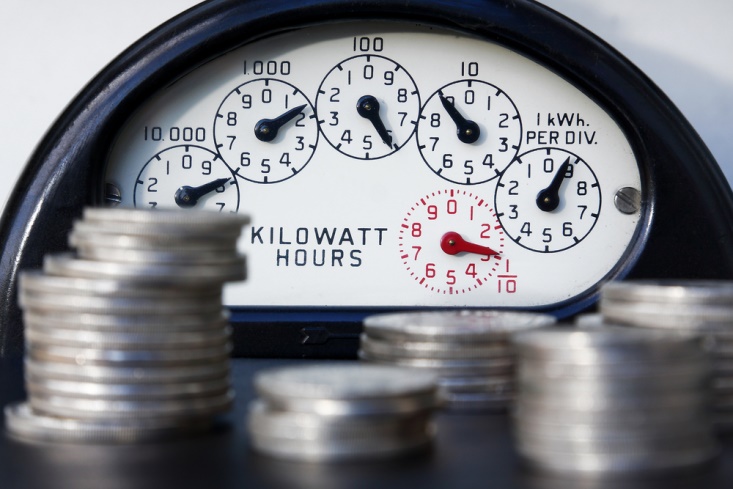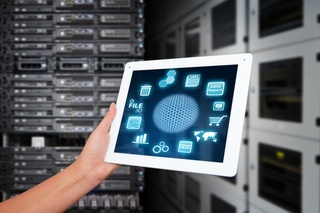 One of the major selling points of collocating a business’ servers in a data center is the reduced energy consumption. Small businesses have long been sold on the idea of reducing the in-house power resources necessary to operate the network, which in many cases had moved well beyond a simple server on someone’s desk to a dedicated space requiring a specialized HVAC system and backup power sources.
One of the major selling points of collocating a business’ servers in a data center is the reduced energy consumption. Small businesses have long been sold on the idea of reducing the in-house power resources necessary to operate the network, which in many cases had moved well beyond a simple server on someone’s desk to a dedicated space requiring a specialized HVAC system and backup power sources.
The cost of space in a data center often works out to a much better value than operating servers in-house, especially when you consider the additional benefits of colocation (like improved security and managed services).
However, one factor that is often overlooked in these conversations, which often include at least some discussion of a data center being a more environmentally friendly option, is that data centers use significant resources themselves. In fact, Google recently estimated that their annual power usage is equivalent of the entire country of Turkey, and other online giants, such as Facebook and Amazon, also use the same amount of electricity as major metropolitan areas.
It takes a great deal of electricity to power the servers that essentially run our lives — one study by the American Coal Association, revealed that it requires more energy to watch an hour of streaming video than to run a refrigerator for an entire year — and that has some concerned about the impact that is having on the environment.
Data Centers, Renewable Resources, and Energy Efficiency
Several years ago, Facebook was the subject of much attention when a Greenpeace report noted that the social media giant operated on as much as 60 percent coal power. Facebook’s response was that the company purchased power from the grid like most other companies, and was working hard to improve its efficiency. However, in time, it became clear that the electricity Facebook was using did in fact come from coal, and about five years ago the company committed to using only renewable energy, such as wind power.
Facebook’s commitment to renewable energy is just one way that data centers are becoming more energy efficient. Still, data centers represent a significant portion of the U.S.’s energy consumption. The most recent data indicates that data centers used about 70 billion kilowatt hours of electricity in 2014 (the most recent year for which data is available), a 4 percent increase over 2010. The good news is that this is actually a decrease in energy consumption from the previous four-year period, in which consumption increased by 24 percent.
 Experts note that there are several reasons for the reduction in energy consumption, despite the growth in data center usage. For starters, there are fewer servers being deployed than in the past, and of the new servers that are being shipped, they tend to be more energy efficient and powerful than older models.
Experts note that there are several reasons for the reduction in energy consumption, despite the growth in data center usage. For starters, there are fewer servers being deployed than in the past, and of the new servers that are being shipped, they tend to be more energy efficient and powerful than older models.
Another key aspect to the reduced energy consumption is the fact that IT has become more skilled in maximizing the efficiency of the machines, primarily through server virtualization, which allows one server to host several other virtual machines, eliminating the need for actual servers.
Hyperscale data centers have also contributed to the reduction in power usage. These data centers are built specifically for energy efficiency and to take advantage of renewable energy resources. Designing a facility’s infrastructure to maximize efficiency, utilizing power monitoring technology, is a key aspect of reducing energy consumption and protecting the bottom line.
Going Forward
While data center power consumption is predicted to decrease over the next five years, it will require a continued commitment to energy efficiency. Power monitoring is going to play a major role in that effort. Data centers will need to continually monitor power usage and establish alerts for specific problems that could increase energy consumption, such as excess heat, or unexpected spikes in power usage. By addressing issues that come up, even minor ones, the center managers can prevent larger problems that lead to extreme power usage and potentially other issues, such as overloads leading to outages.
Data centers should also consider reevaluating their cooling strategy to reduce energy consumptions. While maintaining precise temperature and humidity is important, most data centers can safely operate well above the old standard of 64 degree Fahrenheit, with 75 degrees the new recommendation. This can decrease the power consumption by about 10 percent.
And of course, the servers themselves can contribute to greater efficiency. Newer models (within the last two to three years) are highly energy efficient, especially those with solid state drives that don’t require power to spin. By removing the old, outdated servers from data centers, power consumption will decrease dramatically.
Data centers will always use a great deal of power, but they can be more efficient in doing so. With modernization and a commitment to energy efficiency and using renewable resources, the drain on our power supply will be much less significant.
